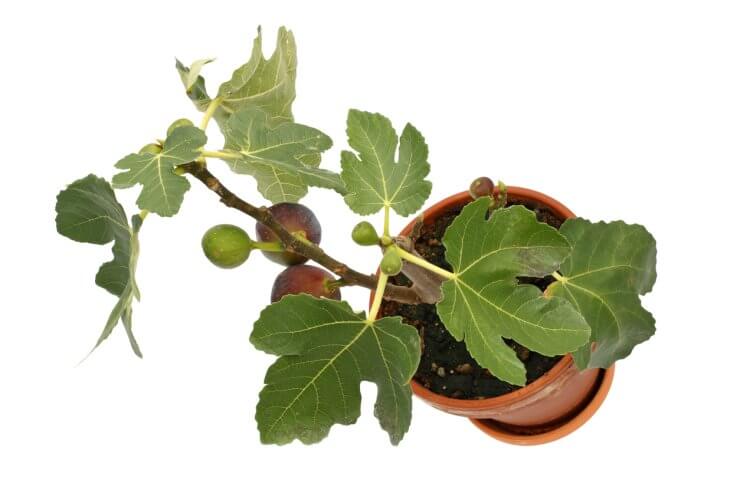
A versatile and delicious fruit (that is also an excellent source of fiber), it’s no wonder why so many people want to learn how to grow figs. In their native environments, fig trees will produce year-round, feeding scores of animal and insect species. Domesticated, fig trees have become a staple in fruit tree gardening. No matter your climate, you too can enjoy the figs of your labor. With a little advanced planning and a bit of research, your very own fig tree can thrive and produce delectable fruit in your home and garden.
Because most fig trees are self-pollinating, they are an ideal addition to your backyard orchard that doesn’t require a second tree for cross-pollination. Most fig fruits come with reddish flesh or whiteish flesh. The reddish figs taste a little more like berries and the whiteish figs tend to taste more like honey. Both go great as an addition to a charcuterie board. And if there’s cheese involved, I’m a happy camper!
Explore the easiest fruit to grow at home—indoors or out! Read our FREEBIE 15 Easiest Fruits to Grow at Home, right now!
How to grow figs indoors
If you live in a climate with unpredictable weather, or extremely cold temperatures, growing figs indoors may be your best bet. If you’re planning to grow your fig tree indoors full time, be prepared to supplement whatever sunlight your potted fig tree gets with additional grow lights. Pruning is also key when growing figs indoors since fig trees tend to grow in a tangle of branches that can ultimately stunt the tree’s growth. Prune any cross branches so they aren’t rubbing against each other and irritating the surface of the branch.
Fig trees like it hot with a little humidity, so as weird as it sounds, when my fig tree was a baby I kept it in my bathroom so it would get a little dose every morning we made our way through showers.
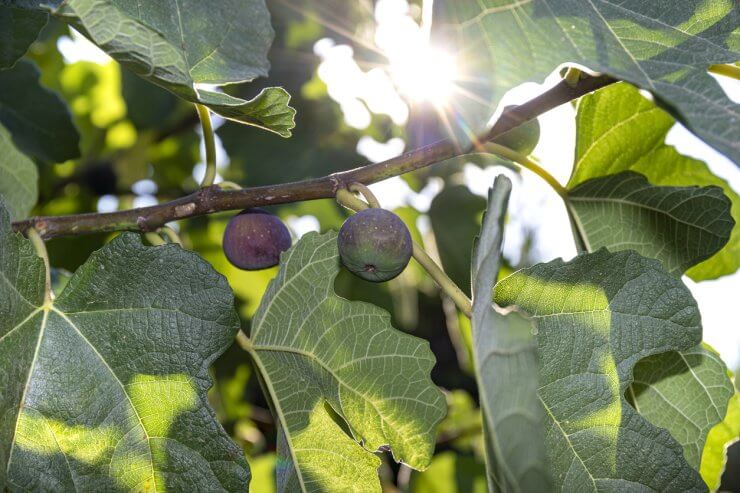
How to grow figs in a hot and dry climate
Fig trees are one of the easiest fruit trees to grow outdoors in hot climates. They propagate very easily from cuttings and can handle full sun, even in desert-like conditions. Fig trees will even tolerate clay soil, making it possible to grow fig trees directly in the ground in hot/dry climates. Overall, a warm climate will make an easy home for your fig trees.
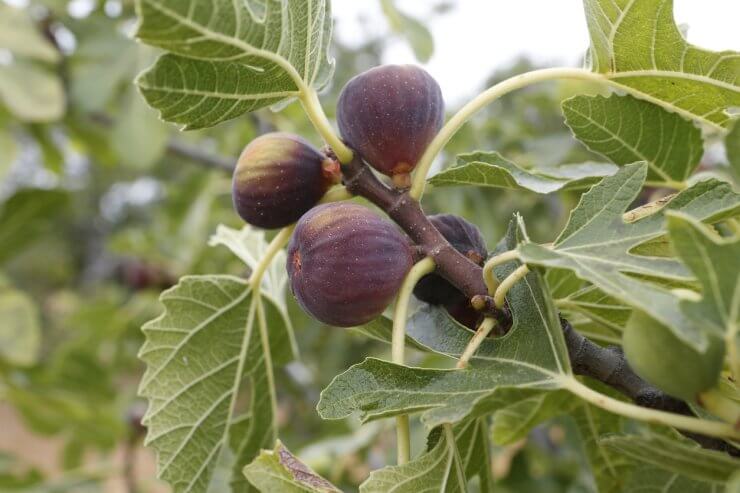
How to grow figs in a cool climate
Yes, it’s possible to grow figs if you live in a cooler climate. You just need to get creative. Fig trees are deciduous, meaning they are dormant over the winter months. Dormant fig trees will tolerate cold temperatures much better than actively growing trees. In their dormant state, fig trees will tolerate exterior temperatures as low as 15 degrees Fahrenheit. If you live in a climate with colder winters than that, consider growing your fig tree in a container that can be brought inside during the winter.
While fig trees are typically grown in a single trunk when planted in warmer climates, you may have more success by growing figs in a bush orientation in cooler climates, with multiple trunks and main branches. This helps ensure the survival of the tree through cooler temperatures as each branch can serve as a propagation cutting if needed.
Perhaps the coolest (pun intended) thing about growing figs in cool climates is the concept of a microclimate. If your climate has a shorter summer season and cooler temperatures, consider planting your fig tree near a south-facing brick or stone wall. The wall will absorb the sun’s heat during the day and continue to radiate the warmth well into the evening.
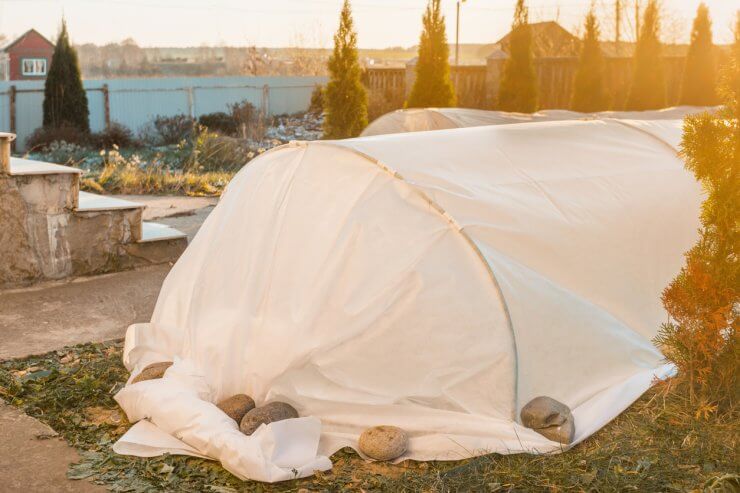
How to overwinter figs in cool climates
Consider this a part two to growing figs in cool climates. If you are growing a fig tree in a cooler climate, research the best way to overwinter your fig trees. Some methods include wrapping the tree to insulate and protect it from snow and winter conditions. Some more extreme measures involve chopping about half of the roots so you can bend the tree all the way to the ground and bury it with mulch and soil. Your method for overwintering depends largely on the size and type of fig tree you have.
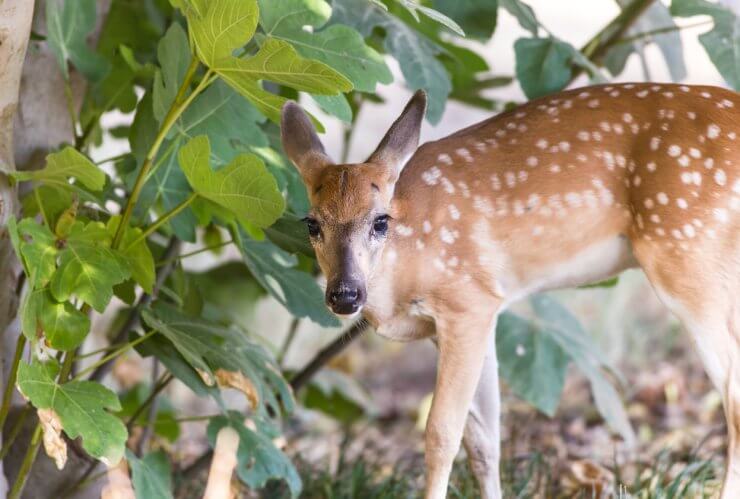
A few final words about growing figs outdoors
If you’re planting your fig trees outdoors, keep an eye on their root system. Many fig trees have aggressive roots systems that can cause damage if planted too close to house foundations. Another caution is to make sure you protect your fig trees from pesky animals nosing about (and looking for a delicious treat). Pick a method that works best for the size and location of your tree.
Do you have experience growing figs? What are your fig-growing secrets? Share them in the comments!
Explore the easiest fruit to grow at home—indoors or out! Read our FREEBIE 15 Easiest Fruits to Grow at Home, right now!





I have fig plants growing in large planters. Must I remove them and cut the roots back??
Thank you!!!
If you are growing your figs in planters you may not need to cut the roots back – just move the containers indoors if you live in a cold climate during the winter.
How do I propagate my fig tree to create another one? It’s a fruiting plant.
To propagate a fig tree, take a 8-12 inch cutting in late winter or early spring and dip the end in rooting hormone. Plant the dipped end 6 inches deep in a pot. Water well, keep it in a warm, sunny location, and after a few weeks to months, the cutting should have developed roots.
I bought mine in Burnaby at the old Mandeville Garden shop.
i have a fig tree in a large pot (a half barrel). This year I got one fig. Last year there were several but due to the late spring it didn’t start to produce. Then the heat wave brought them out but too late to ripen. I wrapped it last year. I am about to do the same this weekend. I call it one of my experiments. I have a shaded yard and I switched pots last year. I think it is called “Petite Niger.” and it is supposed to be suitable for pot growing. Thanks for the tip about growing it as a bush. It is trying to produce branches near the bottom of the trunk.
Just purchased a house with a fig tree. It seems healthy but has no fruit at all. The entire yard was overgrown and it was hidden beneath other trees. Could the lack of sun and proximity of the other trees be keeping it from bearing? It’s very humid here and not below zero even in deepest winter.
Just purchased a house with a fig tree out back. It seems to be h
We have planted quite a few fig shoots and have never had any luck . They will grow for awhile and then die. What could we be doing wrong.? How far apart can you safely plant them? Would love to know what we are doing wrong. We have sandy loam soil with clay about a foot down. Do you fertilize them or not? Thank you.
As long as you’re in a hot climate (zone 8+) there could be a few things at play, but your soil seems OK, they want well-drained but organically rich soil, and the clay under isn’t a problem, and can help with root knot nematodes, actually. Indoors I know my fig trees need a ton of humidity. Do fig trees grow easily in your area?
How close to the house can I safely grow a fig tree?
I would shoot for 20 feet or more, their roots dig deep.
where can I order a fig tree plant?
Richters Herbs near Toronto has offered a few varieties and their shipping methods have ensured live plants any time I have ordered.